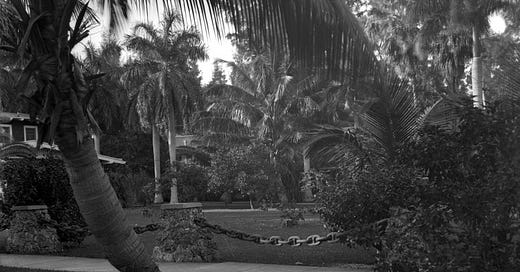Anchor Chain Fence on Brickell Avenue
The origins of the anchor chain found in a perimeter fence along Brickell Avenue was a mystery until recent times. Read the story of the home with the anchor chain fence.
One of the Southside neighborhood’s most popular tourist attractions was an anchor chain fence along Brickell Avenue and SE Fourteenth Street. This fence caught the attention of sightseers and tourists during its time enveloping the Brickell Avenue corner from 1917 until 1965.
To add mystery to an already intriguing artifact, many residents freely shared the tale of the origin of the anchor chain, which turned out to be urban legend. Even those who rented and purchased the home payed homage to a false narrative for more than three decades. While the fence was a unique and ornate feature of the area, it was not the chain from the USS Maine.
Keep reading with a 7-day free trial
Subscribe to Miami History to keep reading this post and get 7 days of free access to the full post archives.




